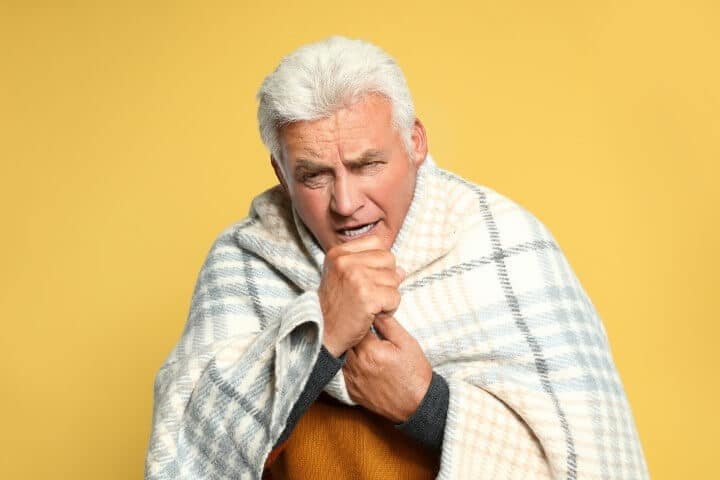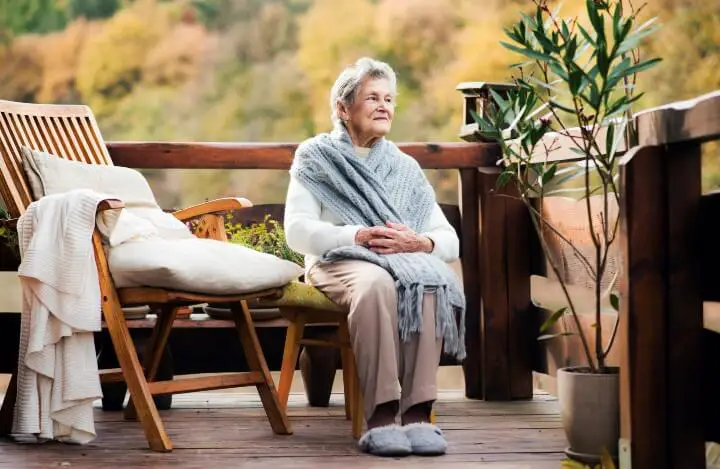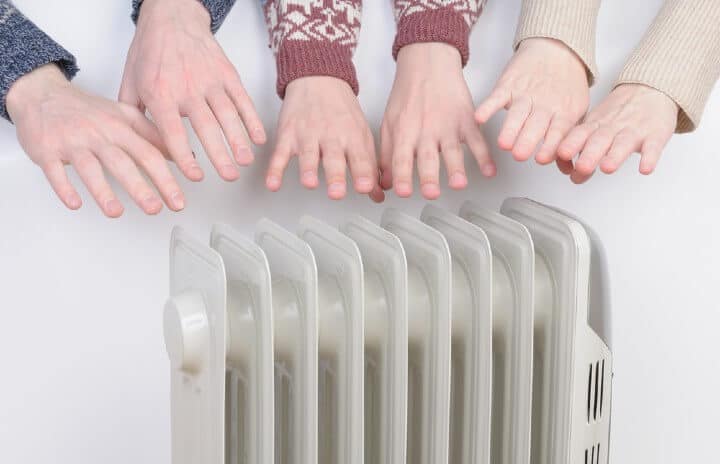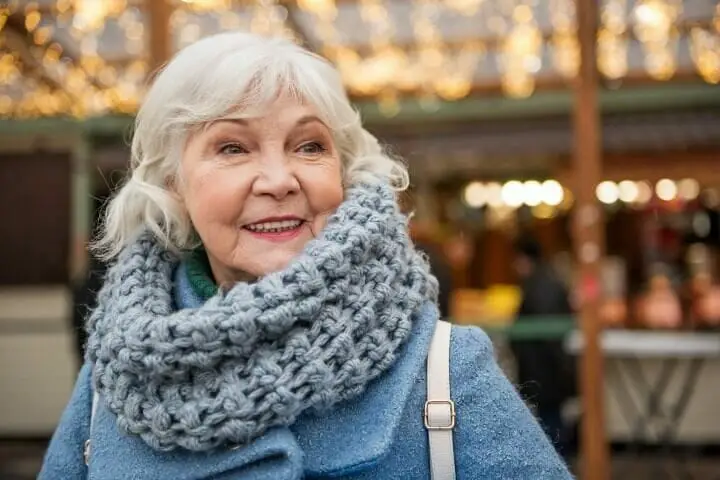Countries that experience very low temperatures, days without the sun, frequent cold winds, and blizzards to boot, are a tough terrain to live in. In such extreme weather conditions, our bodies have a way of acclimatizing. But as we get older, it becomes harder for the body to withstand extreme cold.
This article will guide you through the whys and hows of hypothermia before providing a detailed summary of everything you can do to keep the elderly — the most vulnerable to cold weather — warm, in order to avoid the risk of hypothermia setting in.
Contents
Hypothermia
When body temperature falls below 95 degrees Fahrenheit, the risk of Hypothermia sets in.
Dangers of Hypothermia
Long exposures to cold starts affecting the brain in such a way that you start losing your sense of perception and movement. It becomes difficult to understand what is happening or do anything to rectify it.
Symptoms of Hypothermia
Symptoms and signs to watch out for are as follows:
- Very cold hands and feet with pale skin
- Shivering in the initial stages
- Confusion, delirium
- Slow, weak pulse
- Slow, shallow breathing
- Slurred speech
- Loss of coordination — walking slowly or clumsily with a lack of balanced awareness
- Stiff, abrupt, and jerky movement of the limbs
- Drowsiness
- Ultimately, unconsciousness
First Aid for Hypothermia
Here’s what you should do to help someone suffering from hypothermia:
For a Conscious Patient:
- Remove all sources of cold such as wet clothes, cold air/wind, switch off fans and air-cooling systems
- Change into dry clothes and wrap blankets around them
- Use external heating sources, if available
- Give warm fluids
For an Unconscious Patient:
- Call for medical help
- Check pulse and breathing
- In the absence of either, start CPR and continue till the patient responds, or till help arrives
You may also like Best Winter Gloves for Wheelchair Users
Things to Do
There are various things that can be done to avoid hypothermia or to counter it once it sets in — especially during those cold, winter months.
Precautionary Measures
Various precautions can be taken by the hospital, healthcare staff, caregivers, and family members of the elderly to keep them warm. Here are a few pointers:
1. Room temperature should be maintained at a comfortable 68 – 70F. This is especially important for seniors living alone as they may not notice the cold or the advancing symptoms of hypothermia.
2. Use caulk, sealants, and weather stripping to seal windows and doors or place rolled towels to seal gaps around doors and windows.
3. Remember to seal windows that may be losing heat due to gaps around the windows. Keep blinds and curtains closed.
4. The elderly should be dressed in appropriate layers, even inside the house. Layers can be added/removed as needed.
5. Judicious use of socks, cardigans, etc. is advisable. Cover legs with blankets.
6. When sleeping, wear a cap and long underwear under the pajamas. Use extra sheets/blankets if needed.
7. Cover the head, neck, and ears when stepping out. These body parts lose a lot of heat.
8. Stay updated on weather forecasts to be prepared for needful care.
9. Diet plays an important part in ensuring that the elderly maintain adequate weight and, hence, fat — which insulates the body and keeps it warm. The following should be added to the diet, to enhance immunity:
- Vitamin D – vitamin D3 can be taken to boost its natural levels, which may drop due to reduced sunlight during winters
- Zinc – dry nuts and seeds can be taken to increase zinc in the body which is essential for hormonal balance and sleep, which is often disturbed due to daylight changes during winters
- Vitamin C – it is great for boosting immunity especially against cold and flu in the winters
- Omega 3 fatty acids – they not only boost immunity but also have anti-inflammatory properties
- Vitamin A – consume leafy winter vegetables to boost levels of vitamin A for greater immunity
10. Keep the elderly well hydrated to avoid dehydration.
11. Discourage the consumption of alcohol as it leads to heat loss.
12. Be well informed of drugs that can cause temperature variations
13. Use space heaters and fireplaces to assist in heating. However, maintain adequate ventilation to avoid carbon monoxide poisoning and be aware of fire hazards.
14. If there’s no heat source during a power outage, stay with friends or relatives.
15. Also, make adequate plans for near and dear ones to meet and check on the elderly regularly.
16. Always keep your doctor in the loop. Always seek advice on any change in medication or any increase/decrease of doses.
17. Lastly and most importantly, compassion and positive attention go a long way in boosting morale and energy. In many ways, that’s the most important ingredient of immunity.
You may also like 19 Gifts for Elderly Who are Always Cold
Lifestyle Changes
Big and small changes in the daily routine of seniors can make the cold months comfortable for them.
- A daily routine of comfortable and doable exercises can not only uplift the mood of the seniors but also keep them warm. If the weather is cold, these exercises should be done indoors.
- Warm clothing such as thermals, vests, etc. will give them adequate protection from the cold.
- A warm flask can be provided for a constant supply of warm fluids throughout the day.
- A hot water bottle to heat the torso and other parts.
- Back/hand warmers can be used that can be reheated in the microwave as needed.
Heating Systems
While most houses are fitted with heating systems, caregivers must ensure proper servicing of the heating equipment well before winter sets in. In case the house is under renovation, choose a heating system best suited to the needs of the elderly and one with simple functionality.
- Baseboard heaters – these are most commonly used. They involve electrical resistance heating, as do electric convection heaters, electric forced air heaters, and electric radiant heaters.
- Heat pumps – these are quite efficient as they don’t produce heat but only move it. They are Air Source heat pumps and Ground Source heat pumps. The former is cheaper and can be easily installed, but it is inefficient. Heat pumps are better than baseboard heaters and can cool the house too but the house needs to be well insulated and they take longer to heat a space.
- Solar heating is a slightly more expensive option and it requires a lot of space.
- Other options are wood stoves, heating oil radiators, and gas fireplaces.
You may also like Best Outdoor Security Camera for Cold Weather
Best Gadgets to Keep the Elderly Warm
Here are some smart, modern gadgets that can help the elderly stay warm and comfortable in biting cold temperatures:
Heated Jackets and Vests
These heated jackets come equipped with hand warmers and battery packs. Some also come with interesting features like being able to charge one’s mobile phone while one is outdoors.
They are not very bulky and can keep you more than adequately warm. Ororo, Venustas, and Nomakk are some brands that make these products.
Hand Warmers
These are best suited to those who suffer from arthritis, carpal tunnel syndrome, or anyone looking to soothe sore muscles.
Hand warmers come in two varieties — disposable sachets that provide up to 10 hours of heat; and rechargeable warmers offer a longer, if slightly bulkier, option.
HotHands and Happy Days make disposable hand warmers. Karecel and Foreheart make rechargeable ones.
Heated Mittens
Microwavable heated mittens warm up the entire hand, up to the wrist. They are made of a soft, durable, washable, material that stands up to regular use. They can also be chilled in the freezer and used as an ice pack to reduce swelling and soothe sprains and tissue injuries. Revix, Ororo and HotHands all make heated mittens. You can also consider having gloves for winter.
Foot Warmers
Toasty feet shoe insoles are a great way to warm your feet and avoid chilblains. They can be cut to size too.
Heated Socks
These are a great alternative to foot-warming insoles. They are electric rechargeable heated socks that help provide warmth to chronically cold feet. One popular brand is the Global Vision heated socks which are super soft and cozy.
Heated Scarf
Neck wraps with heating pads are great for keeping the neck warm. The best part is that they have hand pockets at each end for that extra cozy feeling.
Heated Hat
The Autocastle Heated Hat is an amazing way to keep your head warm in cold weather. It also stimulates blood circulation, which is a great boon for the elderly.
Wearable Blanket
These oversized warm blankets are great for lounging around cozily at home. They fit all shapes and sizes.
Heated Throw Blankets
The Sunbeam Heated Throw Blanket is a great one to sit on and enjoy a nice cup of hot coffee or a quiet winter evening at home.
Heated Comforters, Pillows, and Mattresses
Similar to heated blankets, these typically have heat settings to suit one’s needs. Sunbeam and KÖmforte are popular brands offering these products.
Towel warmers
Towel warmers (from brands like Live Fine) are uncommon heating accessories to keep the elderly warm but they are practical during harsh winters.
Mug warmers
Mug warmers (from brands like Ember) come in handy for keeping hot beverages warmed up for a longer time in winters. These mugs have intelligent sensors to know when to switch on and when to go into hibernate mode.
Electric Fireplace Stove Heaters
These are a great alternative to the smoke of a real fire. They are safe to use and touch, and can be turned on and off easily too. Turbo Suburbs heater is one such option.
And finally, to ensure heating costs are not too high in the winter months, there are devices like the Smart Thermostat from brands like Nest that allow controlling the temperature of your home remotely through Wi-Fi.
This helps save on electricity costs, by allowing one to switch off the heating when schedules change unexpectedly. Smart thermostats can be operated through voice management with Google Home and Alexa. They also allow for equal heating throughout the house by identifying cold zones and enabling additional warm air circulation there.
You may also like Best Winter Boots for Bad Knees
Why the Elderly are at Risk
Different factors are responsible for the elderly being especially susceptible to hypothermia.
Aging
An aging body is unable to maintain its metabolic rate at the same pace as in younger years. It is also unable to maintain a normal temperature. The skin progressively thins with age due to the loss of fat. Fat conserves body heat. Loss of fat leads to loss of body heat through the skin. Aging also causes slow blood circulation which may also lead to lower heat retention by the body.
Medical Conditions
Besides age, medical conditions also lead to lowered body temperatures. Cardiovascular diseases, thyroid problems, anemia, diabetes, side effects of medications, stroke, malnutrition, etc. can all increase the risk of hypothermia in the elderly.
Harsh winters can be very trying, especially for the elderly, and health services need to be amped for the same. A combination of precautionary measures, lifestyle changes, heating systems, and heating gadgets can make the icy cold winters warm, cozy, and comfortable for all.






